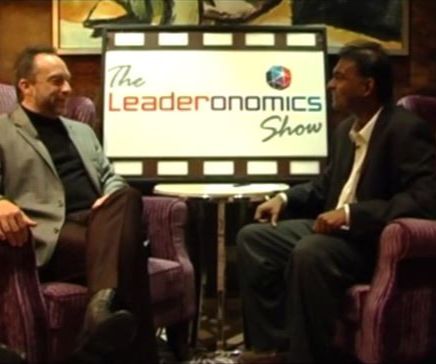The Highs And Lows Of Resolutions: Capturing A Beaming Year!

It is that time of the year again where new aspirations and hope abound – yet, many are hesitant about making resolutions because they appear to be an exercise in futility.
Do failed resolutions indicate that we should abandon the practice altogether?
The answer to this question depends on the “resolution grade” test.
As an analogy, when a picture quality is low, it is foolhardy to blame the object in question.
Rather, we examine the parameters of the vision-capturing process, i.e. did I set the camera right?

Did you set the ‘camera’ right to capture your year?
So it is with setting new year resolutions – we all have noble accomplishment targets and it is foolish to blame the target itself when things go sour.
The starting question to ask then is:
“Did I set the camera right?”
Type 1: Low-Resolution
When the resolution is low, the image will not be as sharp as it should be.
When a picture quality is low, you do not blame the object in focus, rather the diagnostic starts with the camera itself as the capturing device.
Hence, if you resolve to lose 5kg, there is nothing inherently wrong in the goal itself when you fail to achieve it.
The root cause has to do with the capturing process.
Here are three characteristics which define a low-resolution effort:
- The motivation for change is informational in nature.I read a brochure, I listened to a talk and they make sense. So, why not do something about it?
- The method for change is through copying others. In the case of losing 5kg, I resolve to eat, walk and talk like the other person who was successful in his/her weight loss resolution.
- The meaning for change is self-focused.
I want to look good. I want others to think well of me. By losing 5kg, I look forward to receiving positive compliments during a party.
This might interest you: Discovering Your Best Self Early In Your Youth
One of the popular sections in the bookshop nowadays is the “self-help” section.
Why? People are constantly on the lookout for ways to improve without having to admit to others that they need help!
Consider this – it is much safer to read a book on weight loss in the privacy of my home compared to going to someone and admitting my need for assistance.
The anonymity of planning my own resolution with my own perspective of the world and in the comfort of my own thinking offers a safe haven and a low-risk scenario whereby if I fail, I will be spared from perceived embarrassment.
Please don’t get me wrong – I am not putting down the need for self-help materials.
In fact, there are very useful materials out there, but these cannot be an end in themselves.
The information is helpful but often, it is provided by authors who have already “digested” the thinking on your behalf.
So, basically, you are spared from doing any rigorous thinking on your own.
In other words, self-help books are meant to refresh your thinking, not replace it.
Copying a cake recipe would produce the same outcome but when it comes to achieving your new year resolutions, the simple fact is this: you cannot be someone you are not, just more of who you already are.
The make-up of one’s inherent talent, the way a person naturally behaves, thinks and feels is uniquely different one from another.
Hence, a mere “copycat strategy” does not make up for a sustainable and motivated resolution.
Related post: How to Make 2018 “Your Year”
Type 2: Mid-Resolution
When the resolution is average, the image’s clarity is nominal and unexciting.
When a picture quality is nominal, it will be generally acceptable.
However, upon further editing, you will discover that there is a limit to the scope of what you can tweak and modify.
So it is with Type-2 Resolution. There is an appearance of achievement but upon closer examination, the effort is not sustainable.
Referring back to the weight loss example, there would be an initial success of achieving the 5kg reduction, but the 5kg comes back again after a season.
Here are three characteristics which define a mid-resolution effort:
- The motivation for change is to conform. Since almost everybody is doing it, why not just jump on the bandwagon as well? The majority cannot be wrong, right?
- The method for change is through creating instructions. In the case of losing 5kg, I resolve to do it by following certain created, predetermined rituals – 10 push-ups before bed time, reading the calorie count before buying, etc.
- The meaning for change is self-satisfaction. I want to feel good. I need quick results to affirm that what I am doing produces tangible benefits.
With Type-2 Resolution, there is almost a sense of impatience involved:
“I need to have the positive reinforcing experience as quickly as possible.”
As for losing 5kg, the tone will sound like this:
“I will resolve to following methods which will bear the fastest results.”
Now, there is nothing wrong with desiring fast results. However, when it comes to strategic and long-term benefits, this mode of resolution will have limited influence.
Losing 5kg only makes sense if it is accompanied by a change in lifestyle as well.
In other words, I need to decide if weight management is an event (limited influence) or a lifestyle commitment (broader influence).
Recommended for you: Engaging Employees and Setting the Right Stretch Goals
Type 3: High-Resolution
When the resolution is high, the image is a true representation of the original.
The dream of any photographer is to capture the essence of the moment – a truthful representation of the original.
So it is with a New Year resolution which is motivating and sustainable – it captures the essence of what is really meaningful.
It is a truthful representation of not only what’s on my mind but what’s really in my heart.
The premise is this – the deeper my source of inward motivation, the greater the sustainability in my outward behaviour.
Here are three characteristics which define a high-resolution effort:
- The motivation for change is conviction. This is not about following the majority because the rightness of my resolution is not determined by the opinion or the endorsement of others, rather it is fuelled by the rightness and clarity of my conscience.
- The method for change is through truthful feedback. This is where the process becomes painful. This is the ability to find someone who will tell you what you do not like to hear but you know is true. It is exactly at this moment that the real turnaround happens.
- The meaning for change is self-alignment. I want to do what is right, not according to my own opinion, rather according to a standard which is higher than my own fluctuating emotions.
It is not that emotions are not an important element in forming the intensity of our resolve, but it needs to be subjected to the clarity of right principles and values.
The interesting thing is this – those who are successful in keeping their resolutions do not treat their resolutions as New Year resolutions.
Rather, they treat their resolutions as a way of life, a series of life commitments which reflect their belief system and their worldview.
Jonathan Edwards, a well-known author of the early American settlement history, has a collection of 70 resolutions which he reads over once a week!
So to him, a resolution is not confined to just the New Year but a continuous reminder on how to live every day of every year.
Here’s a sample of Edwards’ weekly resolutions which he crafted in 1723:
- Resolved, never to lose one moment of time; but improve it the most profitable way I possibly can.
- Resolved, to think much on all occasions of my own dying, and of the common circumstances which attend death.
- Resolved, never to do anything out of revenge.
- Resolved, never to suffer the least motions of anger towards irrational beings.
- I frequently hear persons in old age, say how they would live, if they were to live their lives over again. Resolved, that I will live just so as I can think I shall wish I had done, supposing I live to old age.
Hence, the paradigm shift here is to treat resolutions not from a yearly perspective but from a weekly perspective.
Instead of waiting for a New Year’s Eve to turn over a new leaf, why not have a “New Week Eve” to reflect on our life journey and make the necessary adjustments along the way?
Some organisations have a sabbatical policy for long-serving employees in order for them to refresh themselves for their next phase of leadership.
Why not on a personal level, we practise a weekly sabbatical?
It could be as simple as setting aside one hour each week to just reflect and refresh ourselves in terms of where we are along the straight and narrow path called life.
Back to the resolution of losing 5kg, if this resolution is captured as a high-resolution commitment, it will look something like this:
- Resolved, to guard my appetite because it will provide me with length of years to invest in my family.
- Resolved, not to sacrifice my health in the pursuit of wealth because I can bring nothing with me when I am gone. However, I can leave behind a legacy of touched lives.
- Resolved, to be in touch with those who love the outdoors. It is a great way to build friendships and manage my weight at the same time.
- Resolved, to take a day off each week – not to work but to invest in building memories with my family.
- Resolved, to say ‘no’ to any habit that could potentially be addictive because I believe that self-control is the path to true freedom.
At the end of the day, it is not so much about losing weight which is the issue, rather it is about gaining life.
We all have this great commodity called time which comes to us every day in a 24-hour package – how we use it to gain more from life is the fundamental reason why resolutions are important.
Life does not happen from a year-to-year basis, it happens on a day-to-day basis.
Without firm resolutions, human nature is such that we gravitate to what is pleasurable rather than what is principled.
“An extraordinary life doesn’t just happen. It must be designed.” – Rick Grubbs
Your call of action
So, when someone asks you, “How is your new year resolution?”, you can reply with this new mind shift and say with confidence:
“My new year resolution is to reflect on my life once a week. What about you? What do you reflect on once a week?”
For this year, set your sight on Type-3 Resolutions which require 52 weekly reflection moments throughout the year.
In this way, when the new year comes, you will have a beaming expression on your face which tells it all:
“I have had a good year. I have lived a good life.”
Joseph Tan a faculty partner with Leaderonomics and is passionate about ensuring all Malaysian employees are fully engaged in their work and with their organisation. If you would like to enhance the engagement levels at your organisation, email Leaderonomics at info@leaderonomics.com for more details.
Leadership
This article is published by the editors of Leaderonomics.com with the consent of the guest author.






